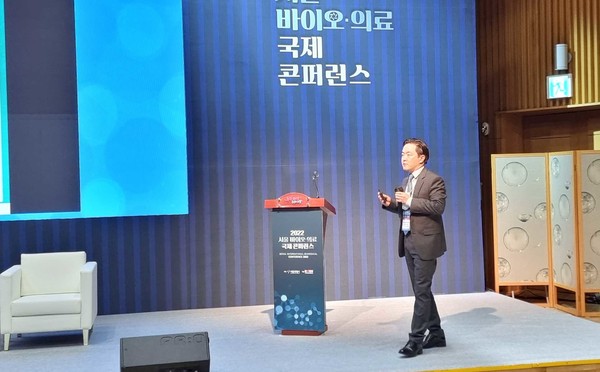The biotech industry has recently become a key sector for many countries as the industry supports the health of citizens in an aging society and serves as an engine for economic growth.
Many countries have created a “biocluster” where universities, public research institutes, and companies are concentrated to maximize their potential.
Korea has also invested heavily into creating such bioclusters, with about 20 bioclusters formed across the country.
However, while many bioclusters are being created, an expert stressed that Korea’s bioclusters lack competitiveness compared to global counterparts due to independent operation and the polarization between the metropolitan area and regional bioclusters.

“Korean bioclusters face three core problems – the intra-cluster problem, the inter-cluster problem, and the national plan problem,” said Cho Young-rae, a Science and Technology Policy Institute (STEPI) research fellow, during the Seoul International Biomedical Conference 2022 held in Seoul City Hall on Thursday.
"The intra-cluster problem is that although regional bioclusters have achieved external growth, they are relatively neglectful of qualitative growth due to the lack of differentiated strategies amid the heated competition among local governments to attract them."
For inter-cluster problem, Cho explained that as each local government created its own biocluster, cooperation between clusters was absent, and the opportunity to generate synergistic effects was lost.
"Also, the national plan problem is that major domestic bioclusters are divided into central government-led and local government-led forms, and each cluster is operated sporadically and competitively,” Cho said.
As a solution, Cho suggested identifying what the core competency of the region is.
Without such analysis, bioclusters will be simply asking for unconditional support, which, in turn, will inevitably lead to goalless support and wasting the national budget, he said.
Cho also noted that the government has to resolve the regulatory issues for the bioclusters to thrive.
“While bioclusters are a regulatory free zone, it is necessary to further strengthen the policy aspect than the business area,” Cho said. “From an intercluster level, I propose that we establish a system where bioclusters can exchange human resources and research equipment .”
To achieve cooperation between regions, the government also needs to launch a high-risk, high-return project that can solve national health crises, Cho added.
If that happens, cooperation between bioclusters will be inevitable, he said.

